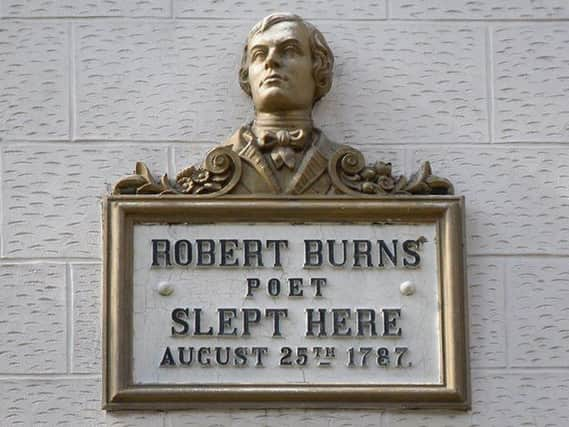Ian Scott: Restoration of memorials is an excellent initiative...


Both are getting a facelift as part of the Townscape Heritage Initiative which is in the last year of the restoration of Falkirk’s historic centre.
I am delighted that the monuments are included because we don’t have nearly enough public art which both improves the look of the place and draws attention to important parts of our history.
Advertisement
Hide AdAdvertisement
Hide AdThe Duke, who had 13 Falkirk bairns by his side at Waterloo in 1815 (clearly the reason for the triumph) and who demanded Carron guns for his campaigns, deserves to be remembered in these parts and the statue erected first below the steeple in 1854 is a fine example of the work of Robert Forrest.
This Edinburgh sculptor has another statue not far away in Dollar Park. When James Russel, the owner of Arnotdale, was laying out his formal garden in the 1830s he asked Forrest to create the figure of the Prodigal Son, pigs and all, and it stands today next to the house. When I was a child it was a favourite place for parents to take snaps of their offspring presumably to encourage them to behave or a similar fate awaited!
The South African War Memorial was unveiled by Lord Roberts in October 1906 to honour 38 men who died in South Africa. It was designed by a young man from Bonnybridge called John Campbell, a student at the School of Arts and Science in Park Street. The image of a soldier defending his comrade was thought by the judges to promote the spirit of gallantry typical of those defending Queen Victoria’s wide Empire.
Another figure looking out across the town adorns the façade of St Francis Xavier’s Catholic Church in Hope Street. The huge figure of the saint was carved in Blaxter stone by Edinburgh sculptor Maxwell Allan in 1961 for the new church building.
St Francis, in the robes of a Jesuit missionary holding up the cross, looks eastwards towards the mission fields of China where he preached and died in the 16th century.
The fathers of the church in Falkirk who chose St Francis as patron back in 1843 must have felt that their mission in Falkirk might be just as tricky as the Chinese venture!
On the same façade there are symbols of the four evangelists carved from concrete by the artist Elizabeth Dempster.
Another saint remembered in stone in the town centre is easily missed.
Advertisement
Hide AdAdvertisement
Hide AdPerched on the entrance of what used to be a bank at the junction of Vicar Street and Newmarket Street is a very small (about three feet) figure of St Andrew who was the patron of the National Bank of Scotland which erected the building in the 1860s.
As well as full figures we have a few heads like the three ‘‘worthies’’ of the Reformation on the 1880 Christian Institute building. John Knox is in the middle but I am not sure of the other two.
Finally in the High Street above the old Cross Keys is the portrait bust of Robert Burns who spent the night there in August 1787.
The plaque was unveiled on the bard’s birthday in 1889 at a time when Falkirk Burns Club held two meetings in the upper room, in January and August.
The building and the plaque are also due to be restored in the coming weeks.
Time to revive the annual meetings there?